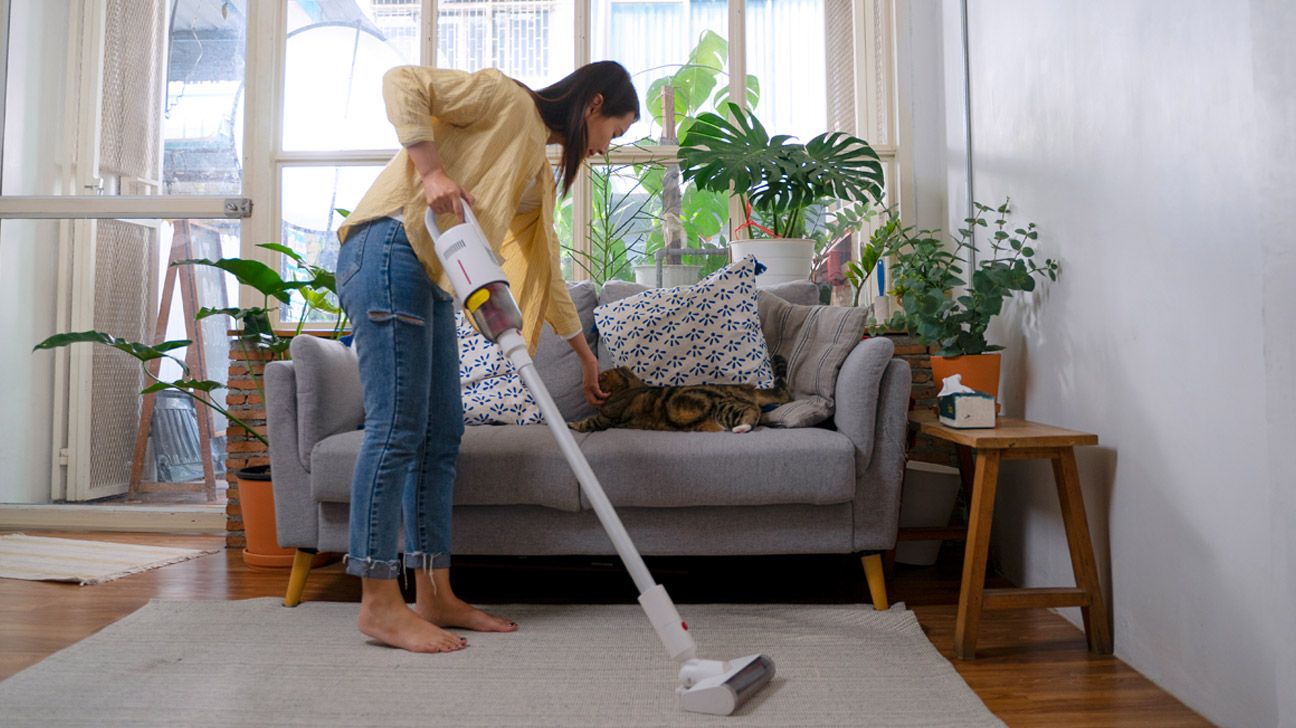There are many triggers for indoor allergies. Treating the symptoms with medications and changing your cleaning routine can help.

Indoor allergies are common. Many people have allergies to irritants in the home, such as mold, dust, pet dander, and household products.
Symptoms can include watery eyes, sneezing, congestion, and coughing. Allergy medications and air filters can help reduce symptoms, but making changes inside your home to reduce your contact with allergens is often the most effective.
Indoor allergies can cause a range of symptoms. These are similar to the symptoms of pollen and other outdoor allergies. They include:
Many common allergy triggers are present inside the home. These include:
- dust mites
- mold, mildew, or damp
- cats and dogs
- cockroaches
- soft toys, throw pillows, mattresses, and other bedding
- indoor plants
- candles, incense, and air fresheners
- cleaning supplies
- cigarette smoke
- fireplace residue
Some of these allergens are inside the walls, floors, and other pieces of the homes people live in. They might be difficult to remove. For instance, older homes often have mold inside the walls.
Other allergens can grow inside household items, such as bedspreads and mattresses. This is manageable with some home care tips.
Do air purifiers help with allergies?
Air purifiers can help reduce some allergy symptoms — especially when factors that are hard to control, such as living in an older home, trigger your symptoms. However, the best solution is often to keep the allergens out of your home.
There are several options for treating your indoor allergies. The best plan depends on the allergy and on your home.
For instance, prescription immunotherapy shots can help control allergies and might be a good option for people with pet allergies and other allergies with difficult-to-avoid triggers.
Other allergies might be best managed with home maintenance. This might include:
- Keeping moisture out of your home: If you own your home, it can help to check for leaking pipes and other sources where water might be leaking and encouraging mold and dust mite growth. Repairing leaking pipes, dripping faucets, and other issues can prevent additional mold.
- Cleaning any visible mold: Vinegar can help clean mold from surfaces. Mold thrives in damp areas and is often present in basements and bathrooms.
- Treating cockroaches: Cockroaches can be a continual problem in some older residential buildings, especially in urban areas. However, you can take steps such as securing your food in air-tight containers, keeping lids on any garbage, not leaving dishes in the sink, and being sure to vacuum and wipe down counters. You can also block any crevices and window cracks that might allow cockroaches to enter your home.
- Avoiding wall-to-wall carpets: Wall-to-wall carpets can be breeding grounds for dust mites. It’s best to avoid them if you can, especially in the bedroom. If you do have carpeting, try low-pile carpeting. Additionally, vacuuming regularly can help cut down on dust.
- Cleaning floors and surfaces regularly: Vacuuming or sweeping at least once or twice a week can help reduce dust and control allergies. When dusting, make sure to use a damp cloth and not a feather duster, which only moves the dust around.
- Using allergen-resistant or plastic covers on mattresses and pillows: Using these can prevent allergen growth in your bedding.
- Keeping pets out of the bedroom: It can be a good idea to keep your pet out of your bedroom. This can help reduce pet dander in your blankets and pillows.
- Wearing a mask while cleaning: Cleaning products can cause allergic reactions. Cleaning can also throw a lot of dust or mold particles in the air. Wearing a mask while you clean can help prevent exposure to these allergens.
- Running a dehumidifier: A dehumidifier can prevent moisture buildup in your home, reducing the overgrowth of mold and dust.
- Limiting house plants: House plants can be sources of indoor allergens. It can be best to avoid them if you’ve been experiencing allergies at home.
Reducing pet allergens in your bedding
The eternal battle of keeping pets off of the bed, especially if you draw comfort from them being there, can be as big a disruption to your sleep as allergies. If this is the case for you, achieving a compromise may still reduce some of your symptoms.
Changing your bedding and cleaning your bedroom frequently can help keep pet dander to a minimum. You could even try sleeping with a clean pillow case every night.
It may also be easier to train your pet to stay off of your pillows, rather than staying off the bed entirely. If you have a dog, you could also try training them to only sleep at the foot of the bed.
Indoor allergens can include mold, dust, pets, cockroaches, smoke, and everyday items, such as candles and cleaning products.
Allergy medications, including prescription options, can sometimes help treat these allergies. However, home maintenance steps are often the most effective way to reduce symptoms. These can include options such as small home repairs, increased cleaning, and dehumidifiers.
